Analysis of HP's event : It's Raining webOS
by Mithun Chandrasekhar on February 9, 2011 9:49 PM ESTClearly the one single item that HP focused on (and also wanted us to) was the HP TouchPad tablet. This marks HP/webOS' entry into what is going to be one of the most competitive sectors of 2011, the tablets. Based on my initial impressions and assuming HP makes good use of the time they have till they launch the device in summer, the TouchPad is possibly one of the strongest entrants. Let's get down to the details.
TouchPad is actually going to be a family of webOS tablet devices. Although no other tablet devices were specifically announced, HP did confirm that variations of the current TouchPad (with 3G/4G) and other additions to the TouchPad family will launch sometime in the future. So although the current TouchPad itself is positioned squarely at the Apple iPad, there is no ruling out the possibility that smaller (and possibly larger) tablets will also face some heat from webOS powered devices.
The TouchPad announced today actually runs webOS version 3.0. However, HP did not disclose any further details about 3.0 or what features presented today would be 3.0-only. The focus was the TouchPad itself, which is powered by the Qualcomm Snapdragon 8x60 SoC which consists of a dual-core Scorpion processor humming along at 1.2Ghz. The TouchPad is the first device to make use of Qualcomm's new 8x60 series of Snapdragon SoC's. You can find more details about this SoC on this page but to summarize, this is a 45nm SoC with dual-cores running at 1.2GHz , sharing 512KB of L2 cache and has the new Adreno 220 GPU. The rated power at maximum load for this SoC is about 1.2W and its memory interface supports LP DDR2. As such, the TouchPad comes with 1GB (double that of the Pre 2, and 4 times as much as the iPad) worth of RAM.
What is not clear though is although the TouchPad announced today was WiFi-only, since the SoC does support a cellular baseband (HSPA and/or EV-DO depending on the particular SoC version), will HP expose this functionality via a firmware upgrade (assuming antennas are built-in) or will they release a new SKU with cellular functionality? Either way, the TouchPad will be available in 16GB and 32GB versions and all versions sport 802.11 b/g/n and Bluetooth 2.1+ radios along with a gyroscope, accelerometer and compass. All of this will be packed into a chassis about 13.7mm thick and weighing 1.6 pounds.
Update: Qualcomm has confirmed today that the Snapdragon in the TouchPad is an applications-only SoC without baseband support. Dubbed the APQ8060 (instead of the MSM/QSD prefix for its baseband-equipped SoC's), this gives a much clearer understanding of why the current TouchPad is and will be WiFi only.
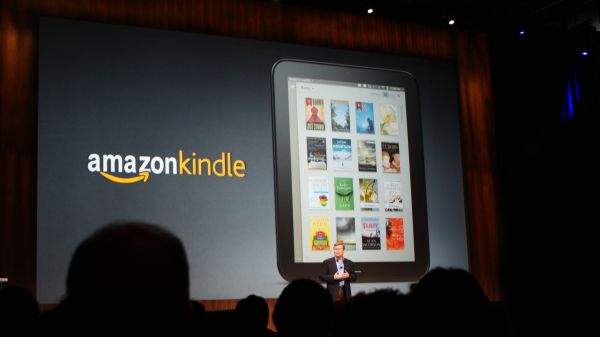
(Left) Amazon Kindle app announcement, (Right) Video chat demo
Now, for features of the TouchPad that are visible, it sports a 9.7-inch 1024x768 display (matching the iPad and being bested by the Xoom in terms of pixel density), although it is not clear whether the TouchPad uses an IPS panel. Atop the display is a 1.3MP front-facing camera that can be used for video calls. Unfortunately the TouchPad does not have a rear-facing camera. The TouchPad also houses stereo speakers (with Beats Audio technology...something that was heavily pushed today). Without actually using the device it is difficult to quantify the quality of any of the above, but from the in-person demos, the screen does have pretty good vieweing angles.

(Top left) Flash HD demo, (Top Right) Armageddon Squadron 2
(Bottom left) Resizeable on-screen keyboard, (Bottom right) Touch-to-Share feature demo
Unlike the Pre 3 that was tagged as a 'professional' device, HP did demo non-professional use cases on the TouchPad by playing an HD Flash video (Kung-Fu Panda), an OpenGL game (Armageddon Squadron 2) and a bunch of Time magazine applications which looked quite impressive. The Flash video played perfectly fine with no skipping or stuttering of any sort. In addition, the game demo was impressive in terms of both the fidelity and performance. It was certainly more impressive than the demos we saw on the Motorola Xoom at the Android 3.0 event.
HP also demonstrated how the TouchPad plays very well with the Pre 3 via the Touch-to-Share feature. Pair the 2 devices via a single button press and from then on, simply 'tap' the Pre 3 onto the TouchPad and the content you were browsing on the tablet now gets transferred to your phone. As shown in the demo, if you were browsing a particular website or reading a particular email on the tablet and you have to rush out without the tablet, just tap the Pre 3 onto the TouchPad and the exact same content is now displayed on the phone. Although I can think of an iOS app that does something along these lines, the functionality and integration shown here is much more straightforward and useful.
And integration is exactly what HP is pushing for with the TouchPad, across the webOS eco-system. Touch-to-Share, wireless printing to almost any HP wireless network printer, deep integration with webservices, all point to how webOS thrives off of connectivity. HP also showed off the improvements made to the email client (multi-select delete...finally!) and how messages received on your Pre 3 can be read and replied-to from the TouchPad.
Given how all the demos on the TouchPad involved working efficiently with multiple apps running in the background, the fact that it is powered by a dual-core CPU should lend itself to such use-cases very well. Since the TouchPad was in fact running a different version of webOS, it is clear that multiple thread scheduling and dispatch capabilities are built into webOS; it's just that HP doesn't feel it is required outside the tablet-space right now (which may also explain why the Veer/Pre 3 have single-core CPUs).

(Left) a case that doubles as a stand (Right) and a stand that doubles as a charger.
Finally, HP announced that they have collaborated with Amazon and Skype to bring both the Kindle reader and Skype apps to the TouchPad. In addition, they also anounced a bunch of accessories for the TouchPad, including a slick-looking Touchstone charger that doubles as a stand.


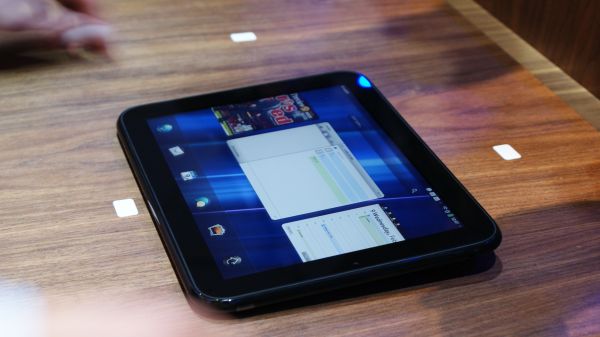
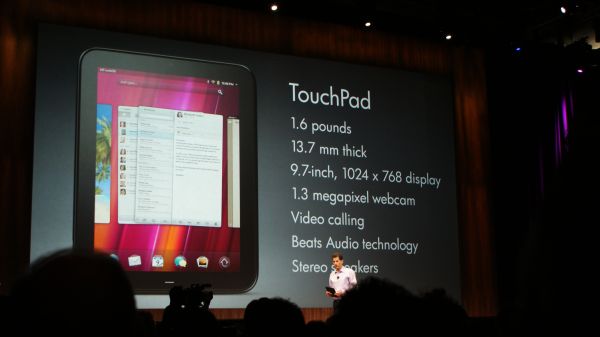
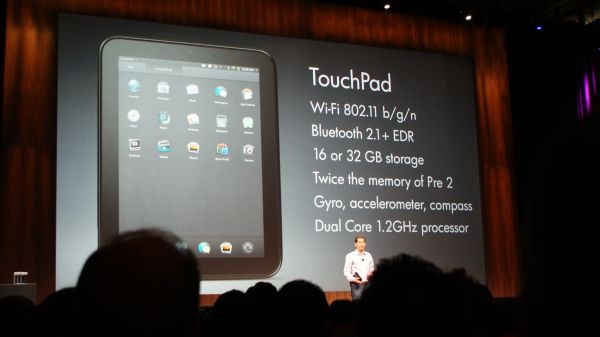
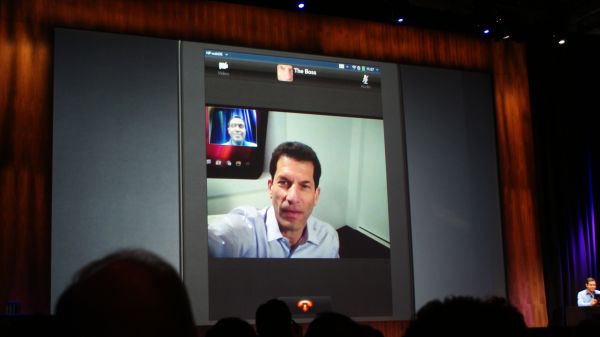
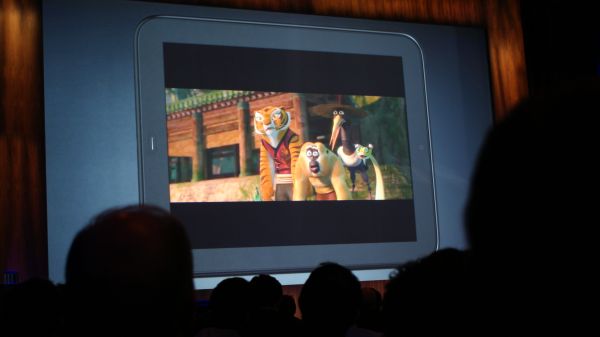
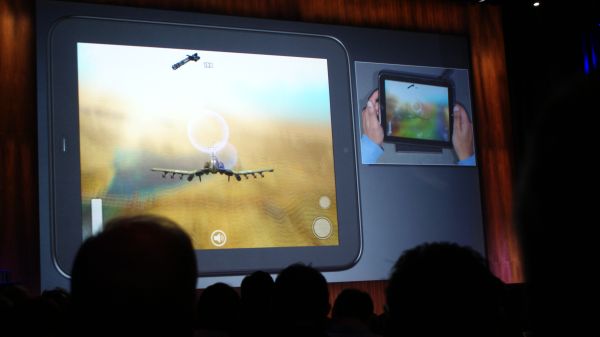
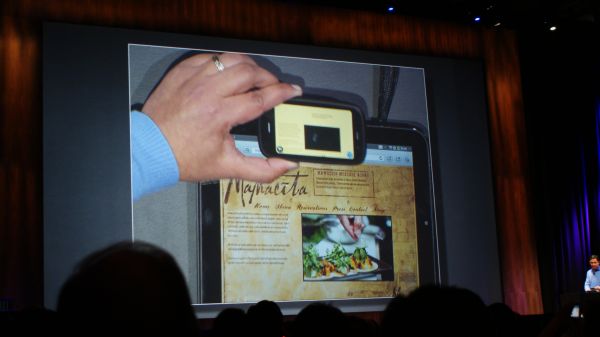
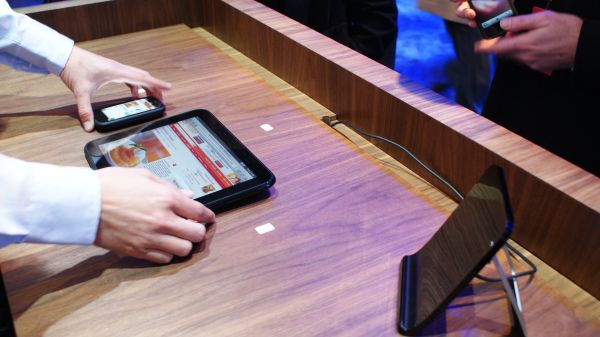














19 Comments
View All Comments
Conficio - Thursday, February 10, 2011 - link
Thanks for a great amount of information.I'd like to know more about the built quality and feel of the devices. The current Palm devices out there feel rather plastic and flimsy. Any different with this series?
I can see a lot of glossy plastic and that does not appeal to me. Even the stand has glossy plastic, a smudge and finger print magnet. The display of the Pad seems a rather glossy screen too.
I also wonder if the Weer has GPS, it is only mentioned for the Pre 3. On a "professional" device the build quality ios even more important. And the glossy black does not look appealing there at all.
And may be I should know that from the Web OS so far, but what is the app market like? Is it closed to a single vendor like Apple? What are the developer conditions (rules for acceptance, competing products, pricing, in app purchase of content, ...)? What is the dev platform like? Or is there an open market, where I can connect my device to HP, an OSS market and my carriers market and get them unified in one view on the device?
strikeback03 - Thursday, February 10, 2011 - link
according to precentral the Veer does have GPS.While I like the idea of a smaller smartphone, I wonder if this is too small. It is about the same width and thickness as my HTC Diamond but a half inch shorter and with a smaller and lower resolution screen. I almost never need a stylus but am generally using a fingernail to press the screen as everything is small. On a capacitive screen that won't be an option. Also the battery is going to be tiny, the smaller screen should draw less power but still I wonder if battery life will be acceptable. I wonder if a Pixi 2 would have been overall more useful?
arswihart - Thursday, February 10, 2011 - link
I agree, it's a waste to go with the same form factor as the Pre, only miniaturized, and the screen being too small was already proven with the Pixi. A Pixi candy-bar style phone with the resolution of the Pre, or an iPhone form-factor slate phone with the resolution of the IPhone4 / Atrix, would have been a much better option next to the Pre3. This isn't going to do well unless it's free on contract at launch.Suntan - Thursday, February 10, 2011 - link
Its fairly open. Costs nothing to submit an app and they are added to the marketplace after a day or two to review them. Hopefully HP continues the love that Palm showed app developers (millions given away in contests, half-off drives where users paid half price but devs still got full loyalties, etc.)Actually, the homebrew scene is just as active as the official app marketplace. I can install a homebrew modification that customizes the base functionality of the phone as simply as I can an official app. All OTA from a simple selectable list with no need to “root” anything.
Personally, I’m a big fan of WebOS and if pre3 is truly shipping as a worldphone, I’m all over it. Don’t even get me started on the luxury of touchstone…
-Suntan
Dug - Thursday, February 10, 2011 - link
I like the uniform look. If HP or developers push out content that works well, they may have a very good chance. What they have shown so far is great and I would buy one right now over an iPad just for the multi tasking and clean look.What I hate about Android is the unclean look between all apps. Different backgrounds, fonts, touch functions, makes it seem very fragmented.
fogle112 - Thursday, February 10, 2011 - link
Is this feature limited only to transferring web addresses? It would have so much potential if it were more extensible. It would be so much better if pdf readers, e-book readers, document editors etc. that may come standard on the devices could use it.But, even beyond that has HP intimated any sort of api that could be used in the development of any application? Possibilities really open up if that is the case.
mythun.chandra - Thursday, February 10, 2011 - link
Although only the web-address transferring was actually demo'd, I am quite sure this functionality would cover other use-cases such as email, books (assuming it is purchased and the Kindle app is made available for the Pre 3) etc.HP is being very open on the development front. If you look at the webOS 2.0 overview article, almost all the new features have been exposed to developers via API's. I would be surprised if this one isn't.
synaesthetic - Friday, February 11, 2011 - link
The Veer could easily replace featurephones as long as the price is right.I've always sort of imagined that as the top-tier smartphone market moves forward, that yesterday's superphones would become tomorrow's featurephones.
Thus far it hasn't really happened, but if the Veer is CHEAP ENOUGH ($200-250 off contract), and Apple actually does put out their rumored "iPhone Mini" for $200 off-contract, I can definitely see these miniscule smartphones giving crappy and un-useful featurephones a serious run for their money.
Now Sony, if you can make another Xperia Mini Pro, but make sure it has a decent CPU... and Android 2.3...
Penti - Saturday, February 12, 2011 - link
It could be a create business phone, not everybody wants a entertainment device for work :)HP needs to start selling them through their distribution-system in all the world though. I can order a Pre 2 here in Sweden from their UK website. But can't get in in stores, on HP's own website and it's not even advertised at all that they sell it to Sweden. Distribution was really what Palm was missing. We couldn't buy the Pre here at all.
Btw I'm sitting on a 260 USD Android now, a few years ago that would have been a feature phone. They already have replace feature phones and as I see it they need to disappear, makes no sense maintaing the code for those platforms. That 260 is with 25% VAT/sales tax included. There's Android phones now for 155 USD here, without a contract. I know it isn't custom to do in the US, but still it's already here. In the US to there is a few android devices from 150 USD.